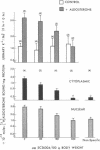Abstract
In vivo, a spirolactone (SC-26304) inhibited the effects of aldosterone on urinary K+:Na+ ratios and the binding of [3H]aldosterone to renal cytoplasmic and nuclear receptors. Cytoplasmic binding of [3H]aldosterone and [3H]spirolactone (SC-26304) was similar in magnitude and involved the same set of sites. Under three sets of conditions—(i) in the intact rat, (ii) in kidney slices, and (iii) in reconstitution studies (mixing prelabeled cytoplasm with either purified renal nuclei or chromatin), [3H]spirolactone (SC-26304) did not yield specific nuclear complexes in contrast to the reproducible generation of these complexes with [3H]aldosterone. In glycerol density gradients, cytoplasmic [3H]aldosterone receptor complexes sedimented at 8.5 S and 4 S in low concentrations of salt and at 4.5 S in high concentrations of salt. Cytoplasmic [3H]spirolactone (SC-26304) receptor complexes sedimented at 3 S in low concentrations of salt and 4 S in high concentrations of salt. These results are discussed in terms of an allosteric model of the receptor system.
Keywords: kidney, aldosterone receptors, tritiated spirolactone
Full text
PDF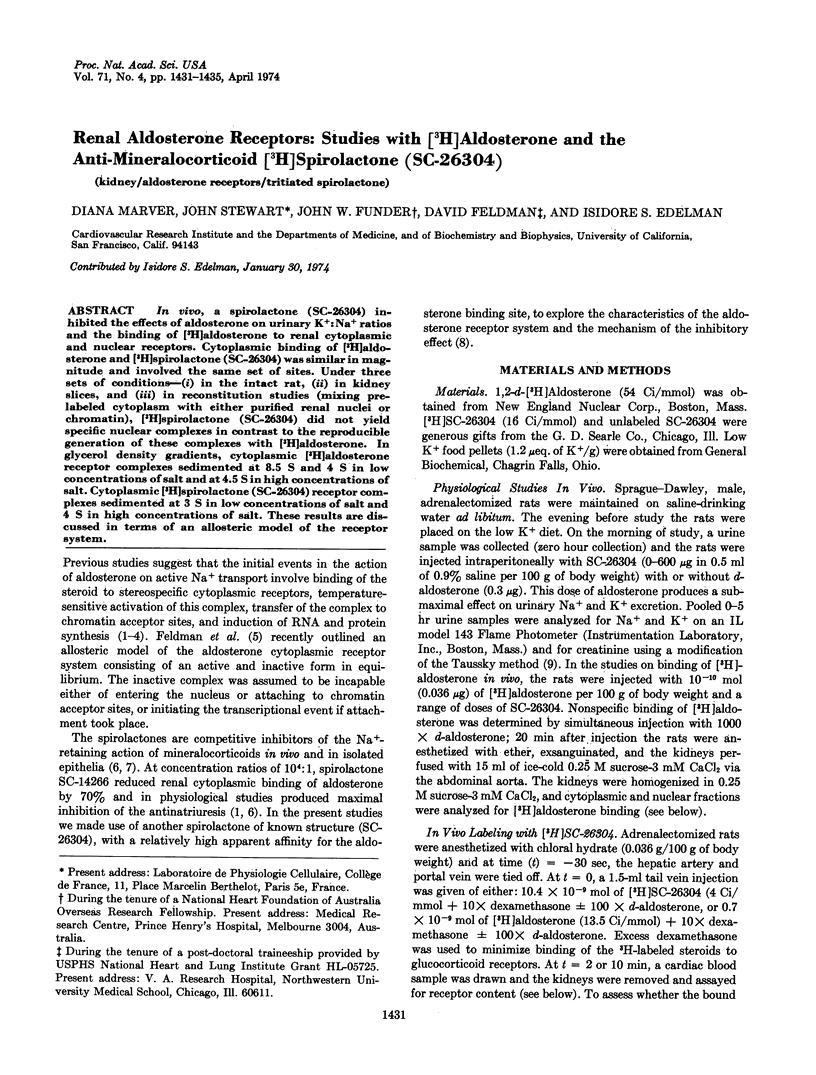
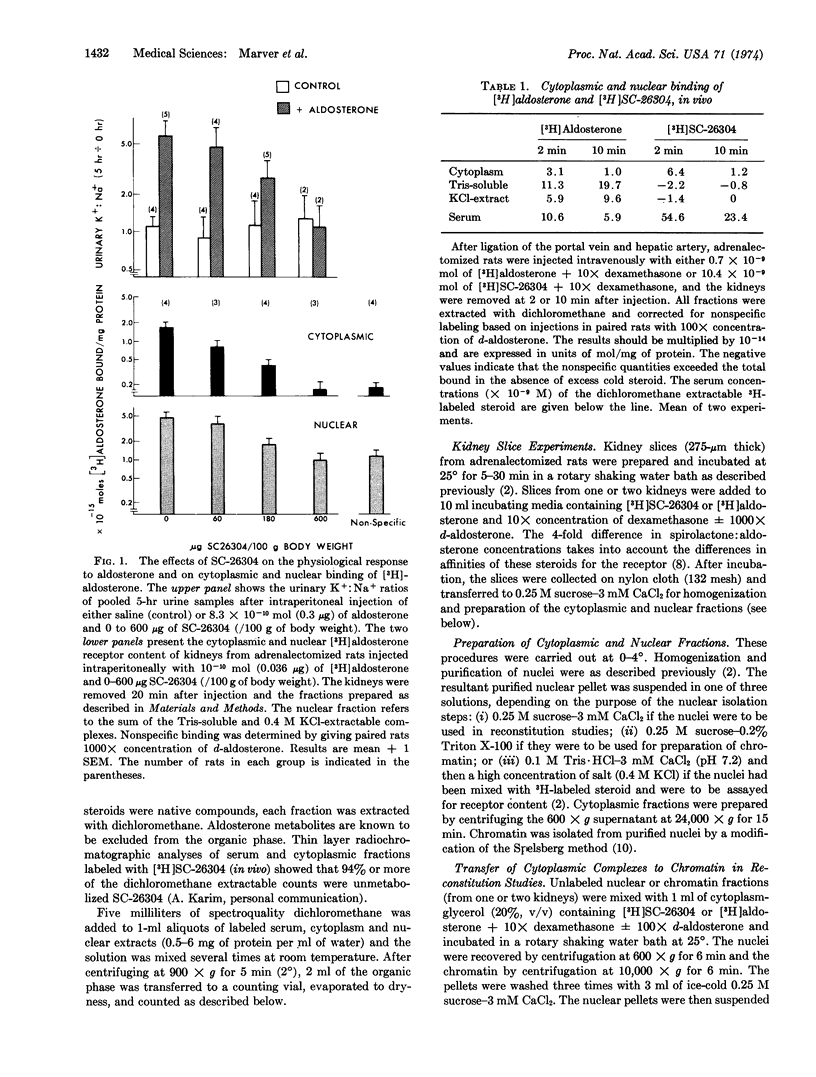
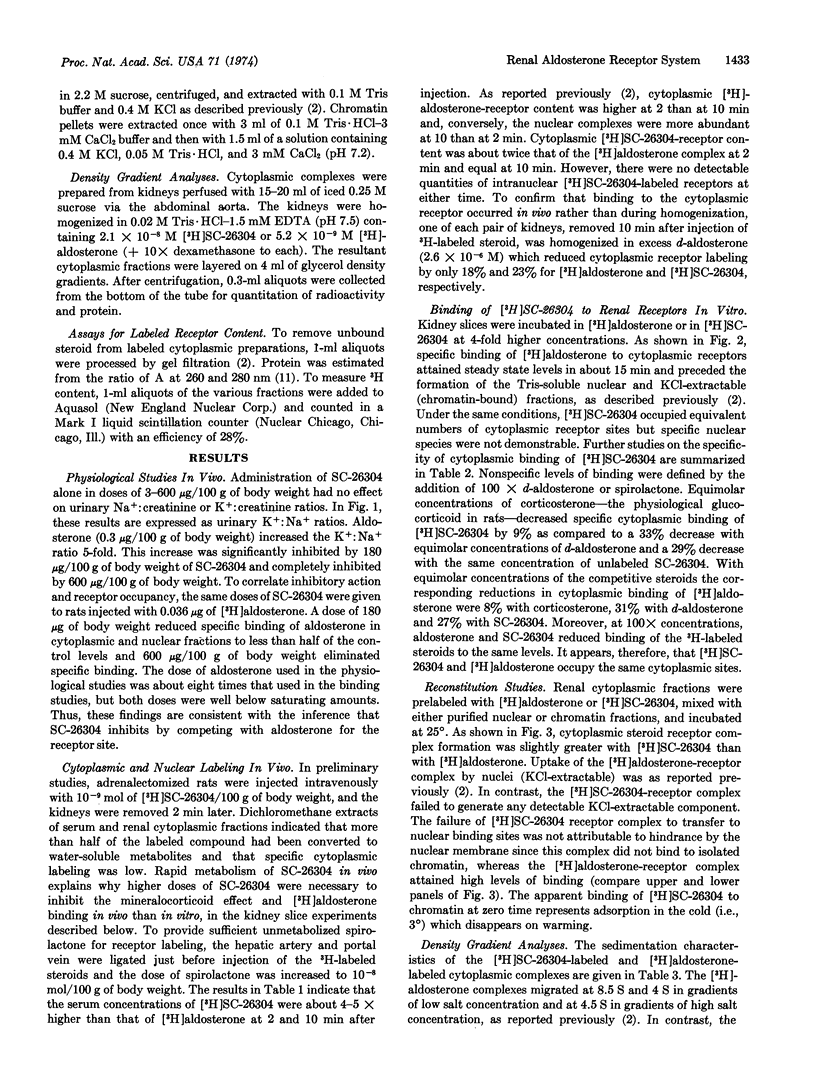
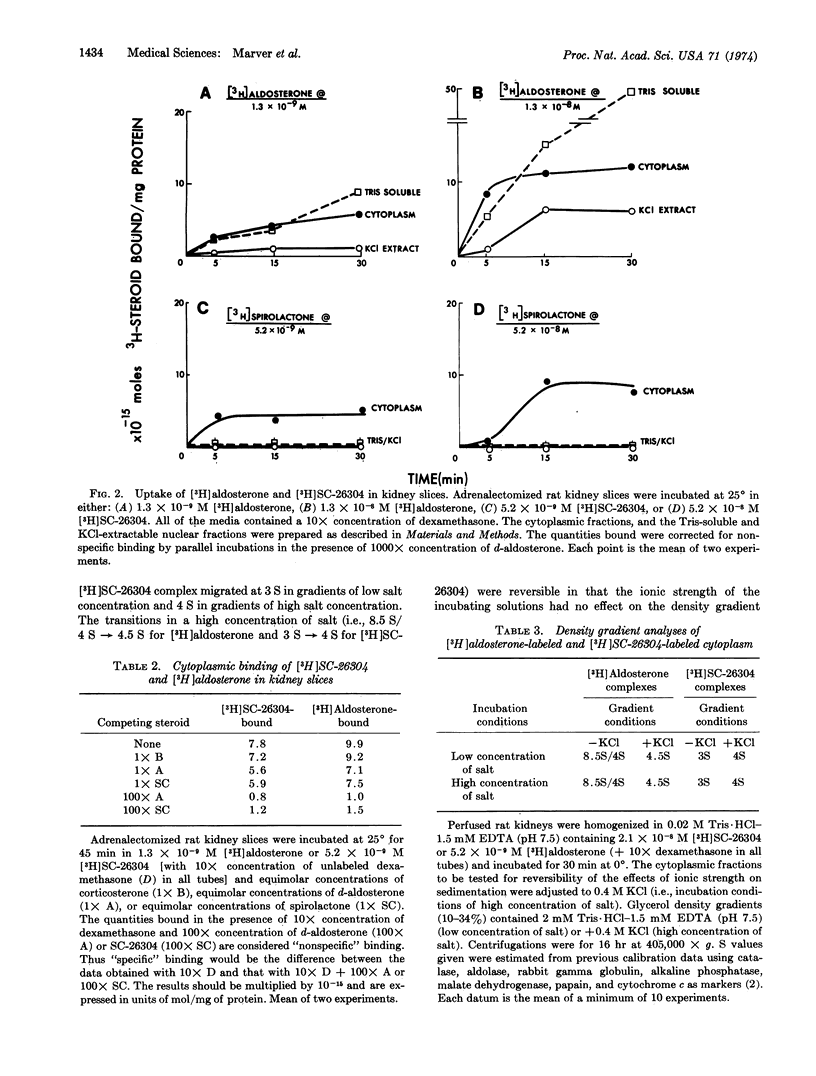
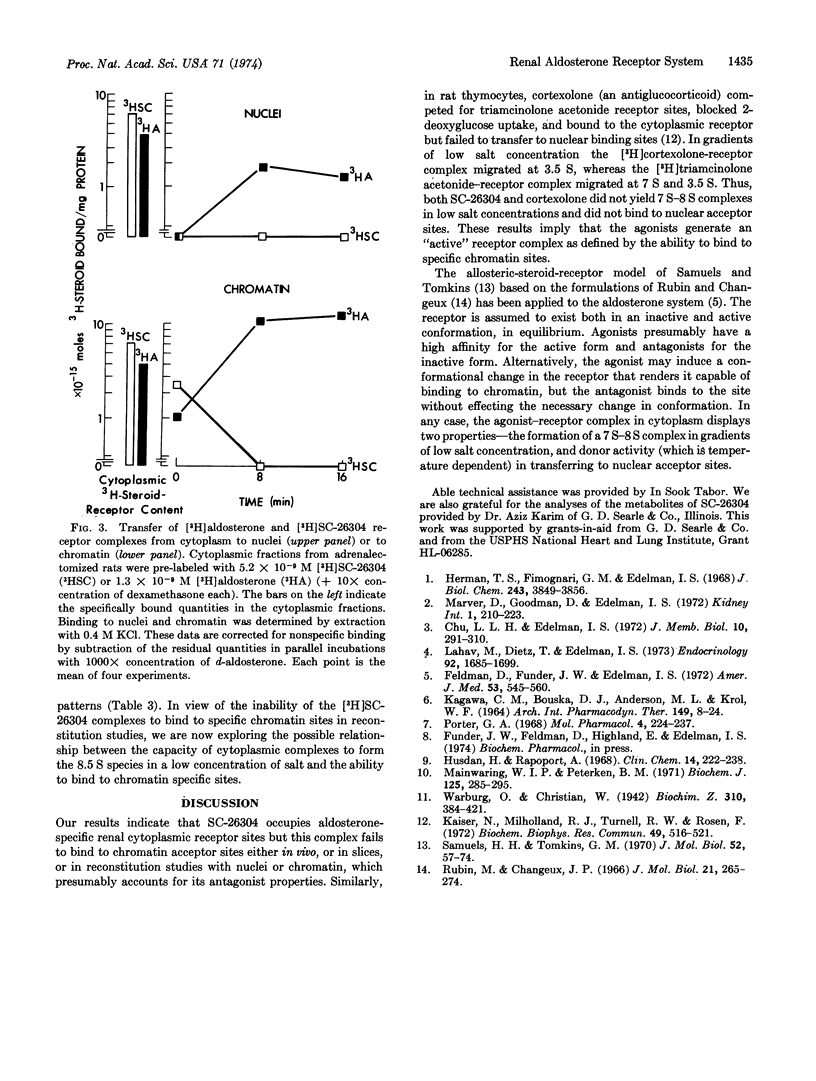
Images in this article
Selected References
These references are in PubMed. This may not be the complete list of references from this article.
- Chu L. L., Edelman I. S. Cordycepin and alpha-amanitin: inhibitors of transcription as probes of aldosterone action. J Membr Biol. 1972 Dec 29;10(3):291–310. doi: 10.1007/BF01867862. [DOI] [PubMed] [Google Scholar]
- Feldman D., Funder J. W., Edelman I. S. Subcellular mechanisms in the action of adrenal steroids. Am J Med. 1972 Nov;53(5):545–560. doi: 10.1016/0002-9343(72)90152-0. [DOI] [PubMed] [Google Scholar]
- Herman T. S., Fimognari G. M., Edelman I. S. Studies on renal aldosterone-binding proteins. J Biol Chem. 1968 Jul 25;243(14):3849–3856. [PubMed] [Google Scholar]
- Husdan H., Rapoport A. Estimation of creatinine by the Jaffe reaction. A comparison of three methods. Clin Chem. 1968 Mar;14(3):222–238. [PubMed] [Google Scholar]
- KAGAWA C. M., BOUSKA D. J., ANDERSON M. L., KROL W. F. PHARMACOLOGICAL PROPERTIES OF A MINERALOCORTICOID ANTAGONIST (SC-14266). Arch Int Pharmacodyn Ther. 1964 May 1;149:8–24. [PubMed] [Google Scholar]
- Kaiser N., Milholland R. J., Turnell R. W., Rosen F. Cortexolone: binding to glucocorticoid receptors in rat thymocytes and mechanism of its antiglucocorticoid action. Biochem Biophys Res Commun. 1972 Oct 17;49(2):516–521. doi: 10.1016/0006-291x(72)90441-x. [DOI] [PubMed] [Google Scholar]
- Lahav M., Dietz T., Edelman I. S. The action of aldosterone on sodium transport: further studies with inhibitors of RNA and protein synthesis. Endocrinology. 1973 Jun;92(6):1685–1699. doi: 10.1210/endo-92-6-1685. [DOI] [PubMed] [Google Scholar]
- Mainwaring W. I., Peterken B. M. A reconstituted cell-free system for the specific transfer of steroid--receptor complexes into nuclear chromatin isolated from the rat ventral prostate gland. Biochem J. 1971 Nov;125(1):285–295. doi: 10.1042/bj1250285. [DOI] [PMC free article] [PubMed] [Google Scholar]
- Marver D., Goodman D., Edelman I. S. Relationships between renal cytoplasmic and nuclear aldosterone-receptors. Kidney Int. 1972 Apr;1(4):210–223. doi: 10.1038/ki.1972.31. [DOI] [PubMed] [Google Scholar]
- Porter G. A. In vitro inhibition of aldosterone-stimulated sodium transport by steroidal spirolactones. Mol Pharmacol. 1968 May;4(3):224–237. [PubMed] [Google Scholar]
- Rubin M. M., Changeux J. P. On the nature of allosteric transitions: implications of non-exclusive ligand binding. J Mol Biol. 1966 Nov 14;21(2):265–274. doi: 10.1016/0022-2836(66)90097-0. [DOI] [PubMed] [Google Scholar]
- Samuels H. H., Tomkins G. M. Relation of steroid structure to enzyme induction in hepatoma tissue culture cells. J Mol Biol. 1970 Aug 28;52(1):57–74. doi: 10.1016/0022-2836(70)90177-4. [DOI] [PubMed] [Google Scholar]



